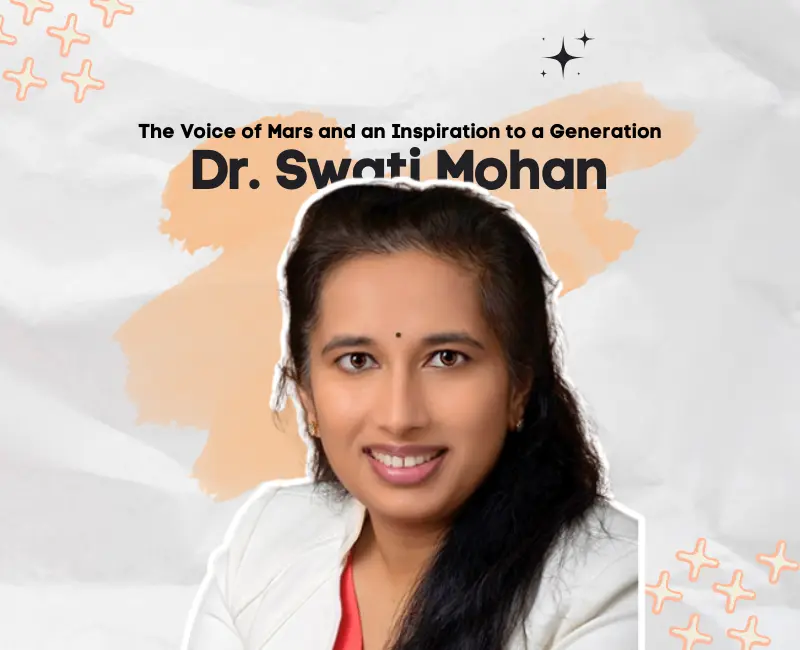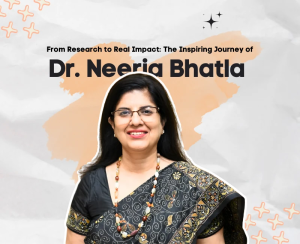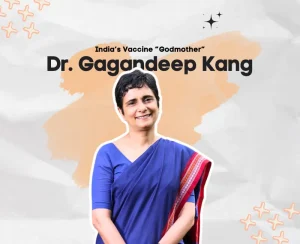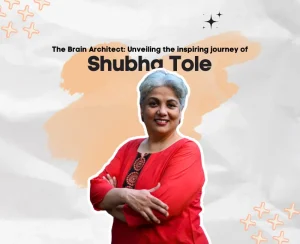Dr. Swati Mohan: The Voice of Mars and an Inspiration to a Generation

On February 18, 2021, millions of individuals around the world watched as NASA’s Perseverance Rover completed its nail-biting landing on Mars.
Cutting through the tension, one calm voice from the Jet Propulsion Laboratory announced the words that would echo worldwide: “Touchdown confirmed.” That voice belonged to Dr. Swati Mohan, the Indian-American aerospace engineer who led Guidance, Navigation, and Controls (GNC) for the mission.
In that historic moment, Dr. Mohan became more than a NASA engineer; she became a global symbol of perseverance, representation, and human ingenuity.
Her trajectory exemplifies the strength of curiosity and perseverance, starting with her early inspiration of Star Trek and continuing through her Ph.D. at MIT and work on missions like Cassini, GRAIL, and Psyche.
Today, she continues to inspire the next generation of scientists and engineers, proving that with passion and persistence, even Mars is within reach.
The Touchdown That Made History
The landing of the Perseverance rover was no ordinary event. It was a high-stakes, high-precision maneuver that engineers at NASA had dubbed the “7 minutes of terror.”
The spacecraft had to autonomously perform a series of complex tasks, from deploying a supersonic parachute to executing a “sky crane” maneuver to lower the rover safely to the surface. It was a dance of technology and physics, with no human intervention possible.
Dr. Mohan’s team was responsible for the GNC system—the “eyes and brain” of the spacecraft, ensuring it knew where it was, where it was going, and how to get there.
Her role was to monitor the critical landing sequence, providing real-time commentary to her team and the world. Her composed demeanor and confident voice, even as the spacecraft plummeted through the Martian atmosphere at over 12,000 miles per hour, conveyed the mastery and dedication of the team.
When she finally uttered the words “Touchdown confirmed,” a wave of relief and joyous celebration erupted.
For countless individuals, especially those of Indian origin, her visible presence, wearing a traditional bindi, made the moment even more profound, a powerful statement of identity and representation in the world of space exploration.
A Childhood Dream Takes an Unexpected Turn
Dr. Mohan’s story is a beautiful illustration of a winding path to a destined career. Born in Bengaluru, India, she moved to the United States with her family when she was just one year old.
Growing up, her passions lay far from the cosmos. For most of her childhood, she dreamed of becoming a pediatrician, an ambition fueled by a deep desire to help people. She was on a clear trajectory, diligently studying and working toward her goal.
However, two moments subtly yet significantly altered her course. The first was at the age of nine when she watched the iconic science fiction show Star Trek: The Next Generation.
The series ignited a nascent curiosity about the universe, though she didn’t yet see it as a potential career. The second, and more pivotal, turning point came when she was 16. She took her first high school physics class, taught by a truly inspiring teacher.
For the first time, she saw a tangible connection between her fascination with space and a practical, logical field.
It was then that she realized engineering was a viable and thrilling way to turn her passion for the universe into a profession. She traded her stethoscope for a slide rule, and the rest, as they say, is history.
The Journey Through Academia and Professional Milestones
With her new career path set, Dr. Mohan pursued her education with unwavering focus. She got her Bachelor of Science in Mechanical and Aerospace Engineering from Cornell University, a foundational step that laid the groundwork for her future.
She then continued her studies at the prestigious Massachusetts Institute of Technology (MIT), from where she did both her Master’s and Ph.D. in Aeronautics and Astronautics.
Her doctoral research on on-orbit operations and autonomous systems provided her with the highly specialized knowledge that would be crucial for her future work at NASA.
Her professional journey at NASA’s Jet Propulsion Laboratory began with an early stint on the Cassini mission, an iconic spacecraft that orbited Saturn for nearly two decades. This experience provided her with invaluable hands-on knowledge in systems engineering.
She returned to JPL in 2010 and continued to build an impressive portfolio, working on missions such as GRAIL, which mapped the moon’s gravity, and the Orbiting Carbon Observatory 3 (OCO-3).
Each project added a new layer of expertise and prepared her for the immense challenge that awaited her: the Mars 2020 mission.
Career at NASA
Dr. Swati Mohan joined NASA’s Jet Propulsion Laboratory (JPL) in Pasadena, California, soon after completing her studies. Over her career, she contributed to several groundbreaking missions, including:
- Cassini Mission to Saturn – Studying Saturn’s rings, moons, and atmosphere.
- GRAIL Mission (Gravity Recovery and Interior Laboratory) – Mapping the Moon’s gravitational field.
- Mars 2020 Perseverance Rover Mission – Serving as Guidance and Controls Operations Lead.
Her work on the Mars 2020 mission made her a household name worldwide. As the lead for Guidance, Navigation, and Control (GN&C), she was responsible for ensuring that the spacecraft followed its trajectory precisely during its seven-month journey to Mars and, most critically, during the “seven minutes of terror” of entry, descent, and landing.
Perseverance Rover and “Seven Minutes of Terror”
The landing of the Mars Perseverance Rover on February 18, 2021, was one of the most challenging and risky operations in space exploration history.
Dubbed the “seven minutes of terror,” this phase required the spacecraft to autonomously handle entry into the Martian atmosphere, a parachute deployment, and a rocket-powered descent before safely touching down.
Dr. Mohan’s voice calmly announced each critical step to a global audience. Her composure under pressure inspired millions, particularly young women and students around the world, to see themselves in STEM careers.
The successful landing was not just a scientific achievement but a cultural moment, showcasing the importance of diversity and leadership in space exploration.
Breaking Barriers and Representation
As a woman of Indian origin in a highly competitive and male-dominated field, Dr. Mohan has broken significant barriers. She represents the increasing diversity in aerospace engineering, highlighting how representation in STEM inspires new generations.
She demonstrated to young females and marginalized communities that they, too, can pursue professions in science and engineering by being on such a historic stage.
Her story resonates deeply with immigrants, minorities, and women worldwide, proving that with dedication, resilience, and hard work, dreams once thought impossible can be realized.
Awards and Recognition
Dr. Swati Mohan’s contributions have been widely recognized. While she remains modest about her achievements, she has received accolades from scientific institutions, media outlets, and cultural organizations.
Her work continues to inspire documentaries, articles, and educational initiatives highlighting women in STEM.
Beyond awards, her greatest recognition comes from the millions of young people who now see aerospace engineering as an attainable dream, thanks to her leadership and visibility.
Inspiring the Next Generation
Dr. Mohan actively encourages students to pursue STEM fields. She emphasizes the importance of curiosity, resilience, and the ability to adapt to challenges.
Her advice often centers on finding mentors, embracing failure as part of the learning process, and staying committed to long-term goals.
In interviews, she has shared that working on space missions is not just about technical expertise but also about teamwork, communication, and perseverance. By sharing her story, she continues to motivate aspiring engineers, scientists, and explorers worldwide.
Lessons from Dr. Swati Mohan’s Journey
Dr. Mohan’s journey offers valuable lessons for anyone striving to achieve big dreams:
- Curiosity fuels progress – Asking questions and seeking knowledge is the foundation of innovation.
- Representation matters – Seeing role models from diverse backgrounds encourages inclusivity and inspires future leaders.
- Perseverance pays off – Just as the rover was named Perseverance, her journey reflects the importance of determination.
- Teamwork drives success – Space missions are never a solo effort; they rely on collaboration, trust, and shared goals.
- Calm under pressure is key – Staying composed during critical moments enables better decision-making.
Looking Ahead
While the Perseverance mission remains one of her most recognized contributions, Dr. Swati Mohan’s career is far from over. With space exploration advancing rapidly, whether through NASA’s upcoming missions, international collaborations, or private space enterprises, her expertise will continue to shape humanity’s journey beyond Earth.
Her role in guiding Perseverance is just one milestone in a career that will likely influence the future of planetary exploration, scientific discovery, and human spaceflight.
Conclusion
Dr. Swati Mohan’s life and career embody the essence of perseverance, innovation, and representation. From a young girl inspired by Star Trek to becoming the voice that guided humanity’s latest step on Mars, her story is a reminder that dreams are not limited by geography, gender, or background.
As we look toward future missions to the Moon, Mars, and beyond, Dr. Mohan stands as a guiding star for aspiring scientists and engineers. Her journey proves that with passion, education, and determination, the sky is not the limit—it is only the beginning.


